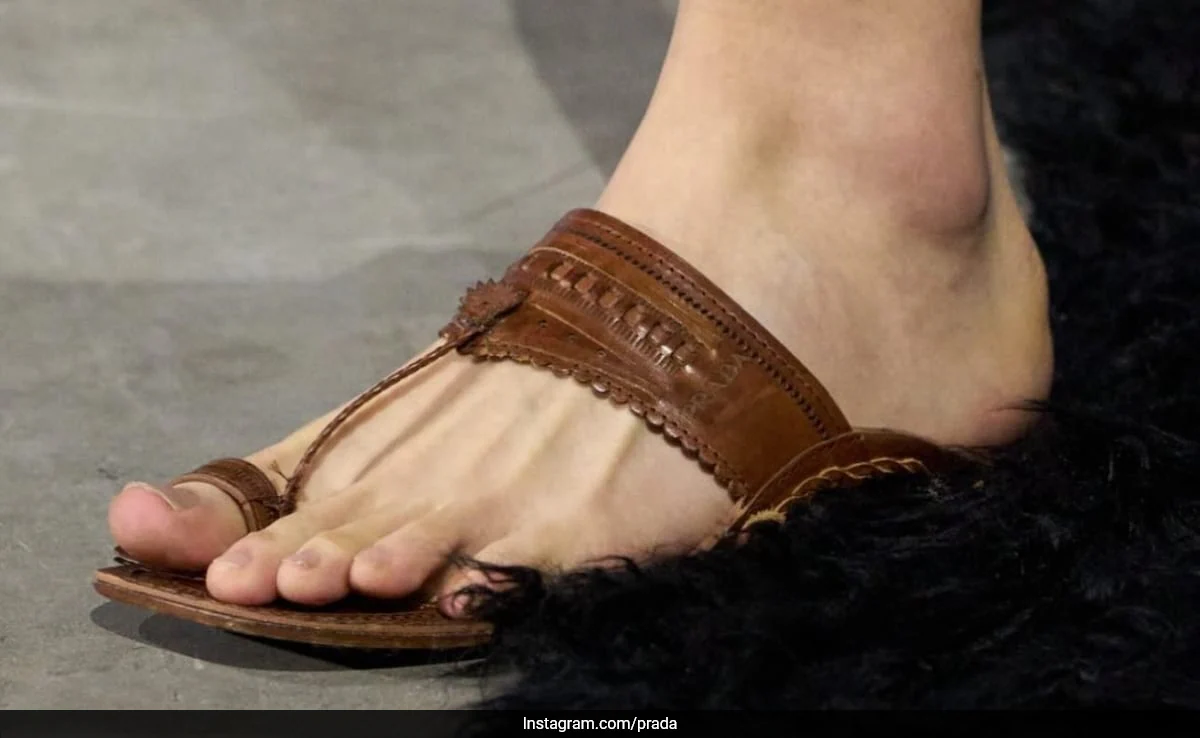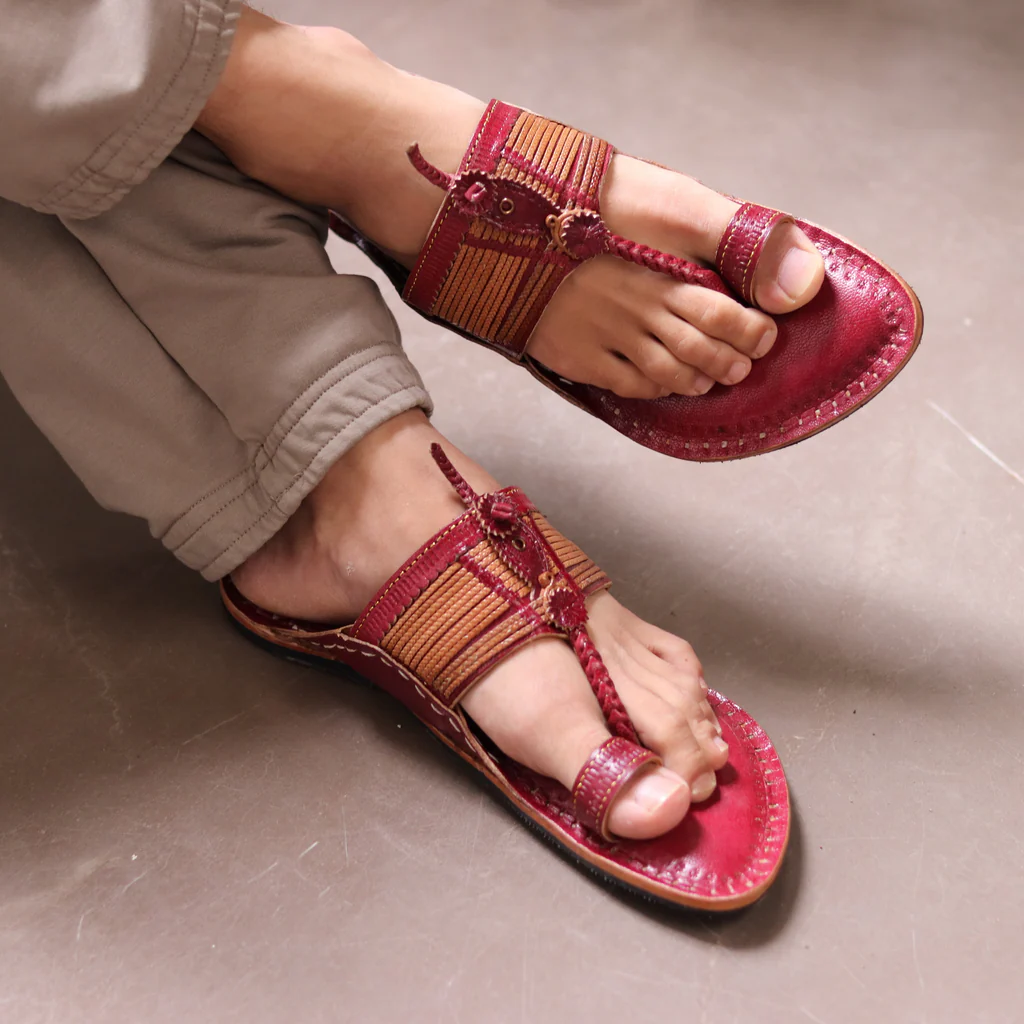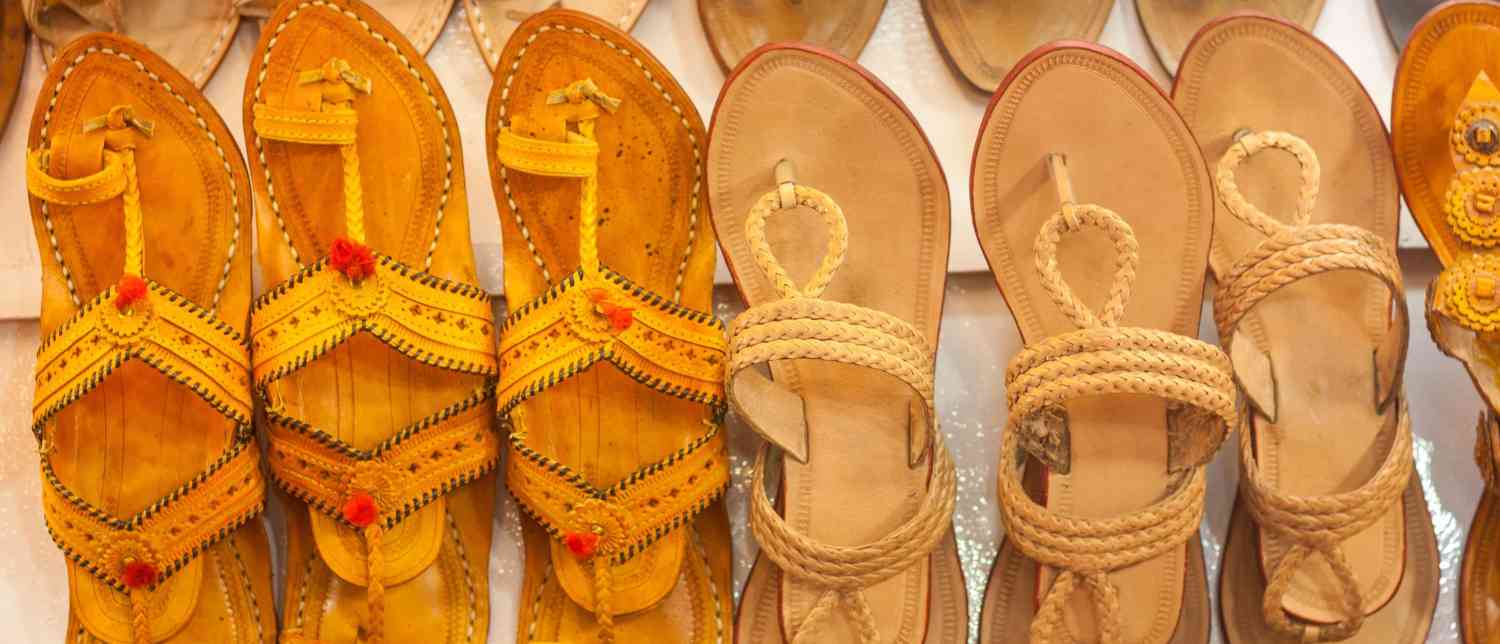In a turn of events that has ignited a cultural firestorm, Kolhapuri chappals—the iconic handcrafted leather footwear rooted in the traditions of Maharashtra and Karnataka—have become the centre of an international intellectual property dispute. At the heart of this controversy is Italian luxury fashion house Prada, which unveiled Kolhapuri-inspired sandals in its 2026 Men’s Spring/Summer collection, showcased at the prestigious Milan Fashion Week. With a price tag of ₹1.2 lakh per pair and no acknowledgment of the chappals’ Indian origin or artisanal heritage, the move has drawn sharp backlash, sparked legal debates, and brought renewed attention to the importance of Geographical Indication (GI) rights.

The GI Tag: A Symbol of Cultural Legacy and Legal Authority
The Kolhapuri chappals were granted Geographical Indication (GI) status in 2019—a move that legally recognises their unique regional and cultural identity. The exclusive global rights to this GI tag are held by two state-run corporations:
-
Sant Rohidas Leather Industries and Charmakar Development Corporation Limited (LIDCOM) of Maharashtra
-
Dr. Babu Jagjivan Ram Leather Industries Development Corporation Limited (LIDKAR) of Karnataka
As per Indian GI laws, only the officially registered GI holders can enforce rights and initiate civil proceedings concerning any unauthorized use of the protected design. In this case, that legal standing lies solely with LIDCOM and LIDKAR.
Both corporations have publicly reaffirmed their sole legal authority through multiple joint statements, emphasising that no individual or organisation other than themselves is authorised to communicate, negotiate, or represent the Kolhapuri chappal in legal or commercial matters—especially with international entities like Prada.
Prada is selling Kohlapuri Chappal for 1.2 Lakh
Prada’s ₹1.2 lakh Kolhapuri chappals are a shameless cash grab. These handcrafted chappals a Maharashtra legacy for centuries sell for ₹300-₹1500 in Kolhapur’s markets.
Yet, Prada slaps on a logo, calls them “leather sandals,”… pic.twitter.com/qkwRoEFRst— Woke Eminent (@WokePandemic) June 25, 2025
Prada’s Milan Showcase: Appropriation or Inspiration?
During the June 2025 runway show in Milan, a model strode down the catwalk in a pair of leather sandals that bore a striking resemblance to traditional Kolhapuri chappals. While the sandals echoed the aesthetic, craftsmanship, and silhouette of the iconic Indian footwear, Prada made no mention of their heritage origin.
The response in India was swift and critical. Social media platforms erupted with outrage. Artisans, cultural advocates, and heritage enthusiasts demanded recognition and respect for the centuries-old craft. A group of lawyers went so far as to file a Public Interest Litigation (PIL) in the Bombay High Court, alleging that Prada’s use of the design violated the GI protection of the chappals.
However, the court dismissed the PIL on July 16, 2025, stating that only the legally recognised GI holders—LIDCOM and LIDKAR—had the standing to pursue legal action in such matters.
कोल्हापुरी चप्पल या महाराष्ट्र व कर्नाटकातील पारंपरिक आणि ऐतिहासिक पादत्राणास भौगोलिक संकेतचिन्ह (#GITag) प्राप्त आहे. या जीआय टॅगचे अधिकृत नोंदणीकृत स्वामित्व संत रोहिदास लेदर इंडस्ट्रीज अॅण्ड चर्मकार डेव्हलपमेंट कॉर्पोरेशन लिमिटेड (#LIDCOM) आणि डॉ. बाबू जगजीवनराम लेदर… pic.twitter.com/ADS4PTuchS— MAHARASHTRA DGIPR (@MahaDGIPR) August 1, 2025
Preserving Artisanship and a 12th-Century Legacy
Kolhapuri chappals aren’t just footwear—they’re history stitched in leather. Their origin can be traced back to 12th-century saint traditions and saw a significant revival under the visionary social reformer Rajarshi Shahu Maharaj in the 20th century. For generations, skilled artisans from Kolhapur and surrounding regions have preserved the intricate techniques of crafting these sandals, turning each pair into a testament of Indian craftsmanship.
LIDCOM and LIDKAR, in their statements, underlined that their mission extends beyond enforcing legal protection. They are actively working to preserve and promote this invaluable cultural asset, while also safeguarding the livelihood of thousands of local leather artisans who depend on the Kolhapuri chappal industry for their survival.
Prada is selling products looking like Kolhapuri chappals for over ₹1 lakh. Our artisans make the same by hand for ₹400. They lose, while global brands cash in on our culture. Sad! pic.twitter.com/Cct4vOimKs— Harsh Goenka (@hvgoenka) June 26, 2025
MACCIA and Prada’s Quiet Engagement Raises Eyebrows
While the state corporations held their ground on legal ownership, a surprising development emerged: the Maharashtra Chamber of Commerce, Industry and Agriculture (MACCIA) began informal discussions with Prada about a potential collaboration with Kolhapuri artisans. Their aim? To convert controversy into opportunity by bringing global exposure to the traditional chappal.
This development, however, stirred fresh complications. Both LIDCOM and LIDKAR issued a strong statement asserting their sole authority to engage in any such dialogues on behalf of the artisans or the Kolhapuri chappal. They maintained that only the GI holders have the legal jurisdiction to facilitate such discussions or agreements.
Yet, MACCIA’s president, Lalit Gandhi, defended the body’s role, stating,
“We recognise the GI tag registration with LIDCOM and LIDKAR, and have informed Prada of this. Prada has assured that it will follow GI tag norms while dealing with craftsmen who make the Kolhapuri footwear. MACCIA is only a facilitator in this collaboration, and being an independent body has every right to engage in a dialogue with a company like Prada.”
According to Gandhi, MACCIA’s intentions were aligned with promoting business and uplifting the artisan community—functions within their organisational mandate.

A Clash Between Tradition, Fashion, and Policy
At the intersection of this conflict lies a broader question: How can traditional crafts be protected, respected, and globally promoted without compromising their roots or legal frameworks?
Prada’s appropriation—intentional or otherwise—has sparked a necessary conversation about global fashion’s relationship with indigenous craftsmanship. On one hand, it spotlights the undeniable beauty and design value of traditional Indian footwear; on the other, it raises ethical concerns around cultural misappropriation, fair attribution, and commercial exploitation.
Meanwhile, for the artisans of Kolhapur, the debate isn't just about legal tags or runway glitz—it’s about dignity, recognition, and survival.
Looking Ahead: Fashion with Accountability
With global fashion houses increasingly looking to traditional and artisanal sources for design inspiration, the Kolhapuri chappal row stands as a crucial reminder: honoring heritage requires more than aesthetic replication. It demands accountability, collaboration, and a respectful understanding of the cultural and human stories behind the craft.
As discussions evolve, all eyes will be on Prada, LIDCOM, LIDKAR, and MACCIA—to see not just who has the legal right, but who takes the moral responsibility to ensure that tradition walks alongside modernity, not in its shadow.
With inputs from agencies
Image Source: Multiple agencies
© Copyright 2025. All Rights Reserved. Powered by Vygr Media.






















